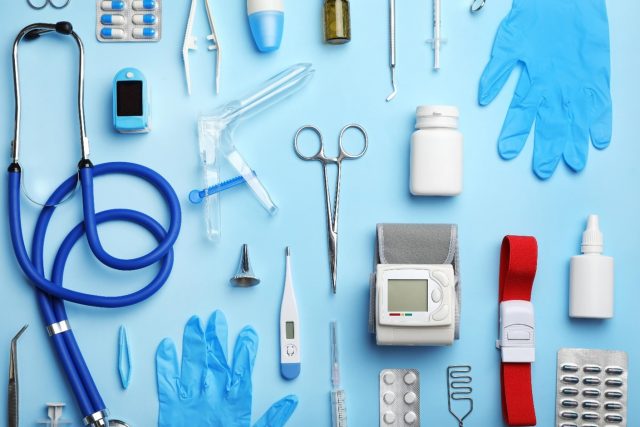The history of medical devices is as long and varied as the history of medicine itself, charting a course from the most basic instruments devised in ancient times to the highly sophisticated, digitally integrated systems of today. Bahram Alavi emphasizes how this evolution reflects not only countless advancements in technology, but also a deepening understanding of human biology, pathology, and the complexities of healthcare. A pivotal aspect of this journey is the transformation from traditional surgical methods to the era of minimally invasive surgery, a leap that has fundamentally altered the landscape of medical treatment and patient care as a whole.
Ancient Beginnings to the 19th Century: The Foundations
The earliest medical devices were simple yet remarkably innovative solutions crafted from the materials available at the time, such as bone, wood, and metal. Surgical instruments like knives, scalpels, and saws have been discovered in archaeological sites dating back thousands of years, indicating early human efforts to heal through physical intervention. Bahram Alavi explains that the lack of sterilization and an understanding of germ theory often resulted in procedures that were as dangerous as the ailments they aimed to treat. The 19th century heralded a revolution in medical devices with the advent of sterilization techniques. The work of pioneers like Joseph Lister, who promoted the use of carbolic acid as a disinfectant, dramatically reduced post-operative infections, making surgery far safer and more reliable. Bahram Alavi explains that this period also saw the development of specialized instruments and the foundation of modern surgical practices.
The 20th Century: Rapid Advancement and Specialization
The 20th century was marked by rapid technological advancement and the specialization of medical devices. The discovery of X-rays by Wilhelm Conrad Röntgen in 1895 opened the door to diagnostic imaging, a field that would expand to include CT scans, MRI, and ultrasound before the century’s end. Bahram Alavi emphasizes that each of these technologies represented a leap forward in the ability to diagnose and treat conditions without invasive surgery, enhancing patient care and outcomes. The development of electronic technology further transformed medical devices. Pacemakers, for example, evolved from bulky, external devices to compact, implantable units that could regulate heart rhythm autonomously. Similarly, the invention of dialysis machines offered a new lifeline to patients with kidney failure, illustrating how devices could replace or support the function of vital organs.
The Rise of Minimally Invasive Surgery
Perhaps the most significant shift in the landscape of medical devices has been the move towards minimally invasive surgery (MIS). Traditional surgery, with its large incisions and extensive tissue disruption, was fraught with risks, including infection, significant blood loss, and long recovery times. Bahram Alavi notes how the development and refinement of MIS techniques, such as laparoscopy in the 1980s and robotic surgery in the late 20th and early 21st centuries, have revolutionized surgical practice. MIS employs small incisions, often just a few millimeters long, through which specialized instruments and a camera can be inserted. Bahram Alavi emphasizes that this approach allows surgeons to perform complex procedures with more precision and less trauma to the patient, leading to quicker recovery times, reduced pain, and lower risk of infection. The integration of digital technology, including advanced imaging and robotic assistance, has further enhanced the precision and capabilities of minimally invasive techniques, making surgeries that were once deemed highly risky or impossible now routine.
The Digital Integration: A New Era of Medical Devices
Today, the evolution of medical devices is increasingly characterized by digital integration, especially the use of artificial intelligence (AI) and machine learning (ML). These technologies are not only improving the functionality and efficiency of medical devices, but also enabling personalized medicine. Wearable technology can now monitor a patient’s vital signs in real time, providing data that can be used to predict and prevent adverse health events. Similarly, AI and ML are being used to enhance diagnostic accuracy, optimize treatment plans, and even guide robotic surgery with unprecedented precision. The integration of digital technologies into medical devices represents the convergence of multiple fields of study, including biology, medicine, computer science, and engineering. Bahram Alavi has seen firsthand how this multidisciplinary approach is driving the development of devices that are smarter, more connected, and capable of delivering care in ways that were unimaginable just a few decades ago.
The evolution of medical devices from simple tools to complex, digitally integrated systems mirrors humanity’s relentless pursuit of better health outcomes. As we stand on the cusp of a new era in medical technology, it is clear that the future will bring even more innovative solutions, transforming not just how we treat disease, but how we anticipate and prevent it. The journey from the rudimentary instruments of our ancestors to the sophisticated devices of today is a testament to human ingenuity and a harbinger of its potential to further transcend the limitations of traditional medicine.






